
Types of Tray and Dish Dispensers
Dish caddies, plate dispensers, and tray carts are essential for high-volume service areas like buffets, cafeterias, dining halls, and catered events. Not only do they keep your china dinnerware and food trays organized, but different dish dispensers let you store, transport, and dispense clean dishes safely and sanitarily. There are different types of tray and dish dispensers with various unique applications. Utilizing the correct one in your operation can reduce the costs of broken dishes and the potential for health code violations.
Shop All Tray and Dish Dispensers
Use the following links to explore the types of tray and dish dispensers:
Your business has its own set of needs and challenges, so choose a plate dispenser that fits the nature of your operation. For example, if you run a substantial buffet, you probably have built-in counters with space to install permanent drop-in dinner plate holders. If you operate an event venue, you likely need versatile dish dispensers since they may serve as storage, transportation, and dispensing units.
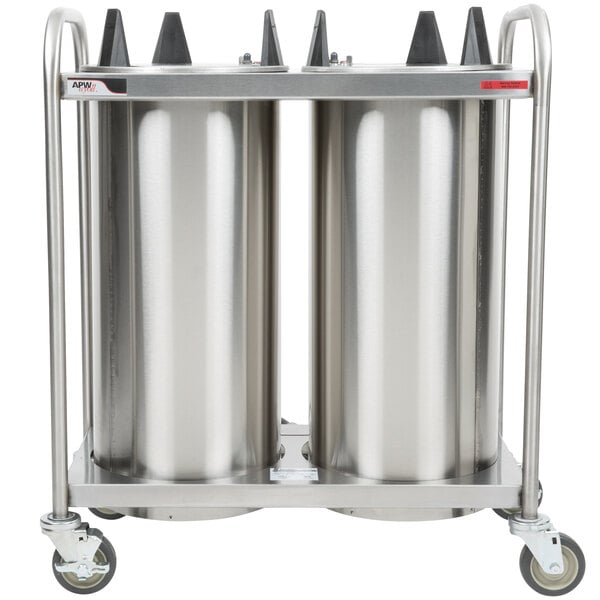
Mobile Dish Dispensers
A mobile dish dispenser consists of a base with casters and one or more wells to hold plates or other dishes. Choose a freestanding plate dispenser for mobile buffet setups, temporary catering lines, or applications where dishes need transporting between multiple locations. This plate dispenser type is also handy in the kitchen to safely transport clean plates from the dish room to a plating area.
Business types: Caterers, event venues, cafeterias, and hospitality
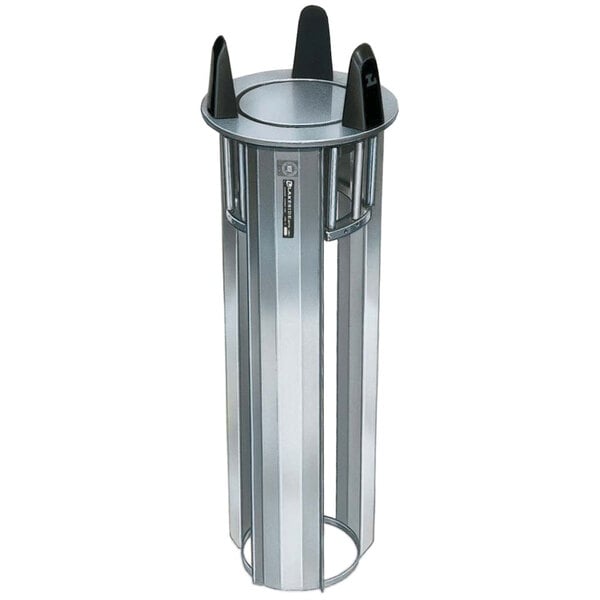
Drop-In Dish Dispensers
Drop-in dispensers are installed directly into a counter and require a permanent cabinet. They offer the benefit of a sleek, professional look for customer-facing usage. Choose this type of dispenser if your business has a permanent buffet setup, has the space for stationary plate dispensers, and utilizes other methods for transporting dinnerware.
Business types: Restaurants with permanent buffets and cafeterias
Many types of dish dispensers fit the different needs of establishments to increase their efficiency. In addition to mobile and stationary units, the appearance of the dispenser also varies. As you consider your operation, check out some of the benefits of the various dish dispenser types.
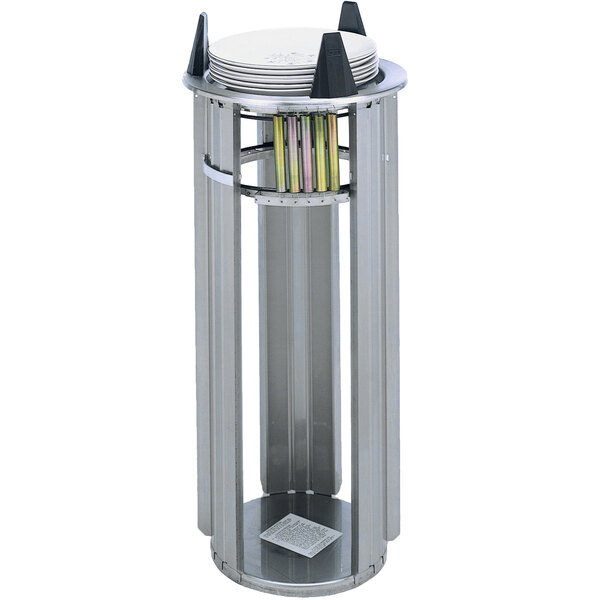
Open Dish Caddies
Open dish caddies are dish dispensers that have exposed tubes or wells. These dispensers are ideal for various applications, including cafeterias, buffets, or salad bars.
Benefits of open dish caddies:
- Easier to clean, maintain, and adjust
- Visible how many plates remain in the dispenser at any given time
- Great for high-volume establishments

Enclosed Dish Dispensers
The sleek sides of enclosed dish dispensers look professional in establishments where you want a more upscale appearance.
Benefits of shielded dish dispensers:
- Help to keep your plates concealed and protected from contaminants and breakage
- Have a more decorative appearance as a step between open units and drop-in units
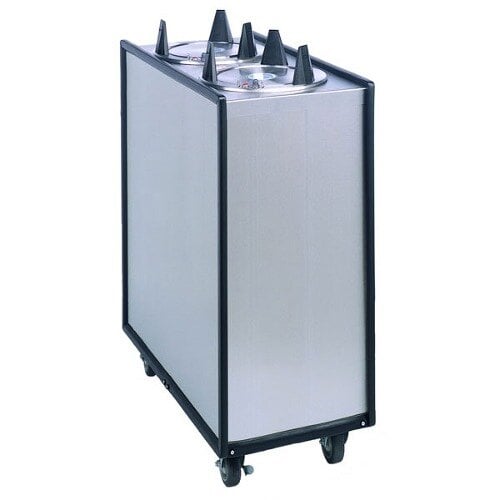
Heated Plate Dispensers
Use a heated plate dispenser to keep plates warm until use, which keeps food hot for longer. These dispensers are crucial for businesses that need to keep meals at food safe temperatures during plating.
Benefits of heated plate holders:
- Keeps food hot between the plating area and the dining room
- Reduces thermal shock on dishes from carrying hot foods
- Using a restaurant plate warmer can help upgrade the customer experience
Trays are a crucial part of establishments like cafeterias, and there are many types of tray dispensers you can use in your operation. In many ways, tray dispensers look and work just like plate dispensers. Because of this, follow the same logic when considering your tray dispenser's application, type, and sizing requirements. When choosing a cafeteria tray dispenser, examine the primary considerations for plate and dish dispensers.
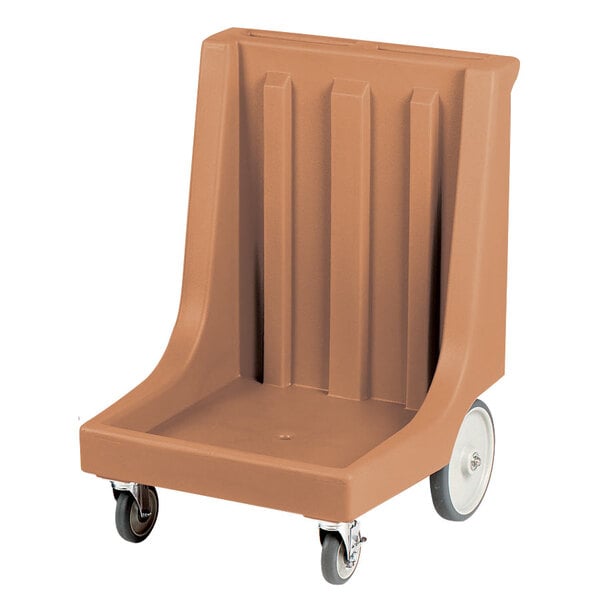
- Tray dollies: For operations that only need to store and transport trays, tray dollies have large tray capacities and are designed specifically for transportation purposes. Using these makes storing and moving large numbers of cafeteria trays easier, which keeps your service running smoothly.
- Freestanding tray dispensers: A freestanding tray dispenser mirrors the style of mobile plate dispensers with open or enclosed options. Choose one with built-in napkin dispensers and silverware bins for quick tray setup in a fast-paced environment.
- Drop-in tray dispensers: Like drop-in plate dispensers, a drop-in tray dispenser mounts in your existing countertop. They are great for high-volume venues with plenty of cabinets and counter space available to set up your tray dispensing system.
Some applications may not work with a standard freestanding or drop-in plate dispenser. If that is the case, it may be time for you to purchase a specialty dispenser designed for your particular job.
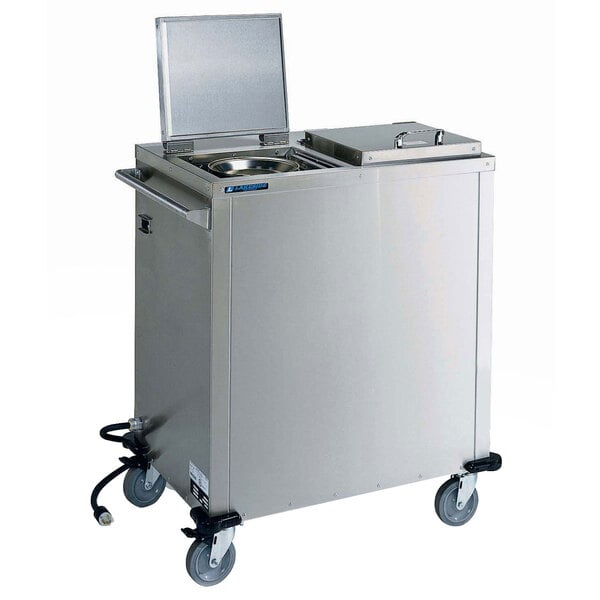
- Combination glass rack and saucer dispensers: A specialty combination glass rack and saucer dispenser combines a 20” x 20” glass rack dispenser with a freestanding plate dispenser in one convenient unit. They hold coffee cups and saucers simultaneously, allowing you to store, transport, and dispense the necessities for a hot beverage station with one cart.
- Pellet dispensers: For operations that rely on a pellet system, using pellet dispensers keeps pellets hot and handy for staff. This feature saves your operation money by preserving these pellets.
Sizing is a vital aspect of plate and dish dispensers. Follow these four simple steps to find the plate dispenser size that will best fit your needs.
1. Choose Plate Dispenser Well Shape
Plate and dish dispensers are available with wells in several shapes to match your china. There are styles available to accommodate round plates, oval platters, or square plates and dishes.
2. Choose Plate Dispenser Well Diameter
Purchase the smallest size dispenser that fits your china. Before choosing the dimensions of the wells, you need to know the dimensions of the different types of china that you store and dispense. To find this information, you may need to physically measure the dinnerware.
There are two types of wells to choose from - standard wells with a fixed size and adjustable wells that can be modified in the field to hold different sizes of dinnerware. Each has its benefits and drawbacks.
Note that some tableware varies very slightly in size from one piece to another. Lakeside, for example, recommends allowing for a 1/8" variance from the specified dimensions of your china to be sure that the dispensers you choose will be a good fit.
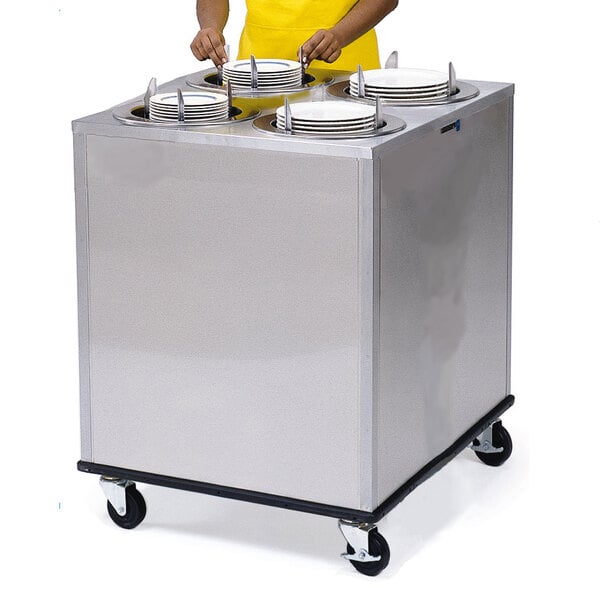
- Adjustable plate dispensers: An adjustable plate dispenser allows you to use the same dispenser for many plates of all different sizes. This feature is ideal for operations that change china often.
- Standard plate dispensers: Featuring a fixed diameter for a specific plate size, standard plate dispensers offer an inexpensive option for operations using the same china consistently.
3. Choose Dish Dispenser China Capacity
Find out how many plates a unit will hold by stacking and measuring your china. If you do not have your china yet, the manufacturer's specifications of your chosen plates may help you estimate.
Most standard plate dispensers can hold a stack of plates up to 25" high. If you need an ADA height model, the capacity may be limited to 22" high.
4. Choose Number of Plate Dispenser Compartments
Plate dispensers come with different quantities of wells to meet different capacity needs. Most drop-in dispensers come as single wells, but you can purchase the number needed to outfit your buffet line.
For freestanding plate dispensers, purchase a single, double, triple, or quadruple well model. If you choose an adjustable plate dispenser with multiple wells, you could use the unit to hold and dispense plates of different sizes at the same time.
Back to TopAs you consider the various needs of your establishment, there are several other dish dispenser considerations. Examine your kitchen, plating area, and buffet to ensure that the unit specifications fit in size and appearance. Additionally, some extra features increase the efficiency of your dispenser.

- Springs: A spring-loaded plate dispenser uses springs that slowly lift the plates toward the top of the well so they are always easy to reach. Different manufacturers use different spring designs, some of which let you easily attach and detach springs for quick height adjustments.
- Self-leveling: If dispensing plates evenly is a priority, choose a self-leveling dispenser to keep the plates or dishes level during storage and dispensing. This feature creates a professional appearance and protects your dinnerware from breakage.
- Counter cut-outs: Drop-in dish dispensers require cut-outs in the countertop, so make sure you can accommodate the cut-out requirements if you choose a drop-in unit. Also, check unit specifications to ensure everything fits properly.
- ADA height plate dispensers: If your buffets are ADA height, you may need ADA height plate dispensers to fit properly when installed in your cabinetry.
- Dish dispenser well covers: Dish dispenser well covers protect the dishes from contaminants and keep the heat inside the wells of heated units so that they can operate safely.
Related Resources

Types of Chinaware
Whether you're a restaurant owner , event planner, or caterer , identifying what china to purchase can be difficult. Making the right choice can elevate your serving experience and leave a lasting impression on your guests, while the wrong choice can negatively impact your service. China varies in shape, size, and color, presenting a wide range of options. Continue reading to learn about the different types of china, what sets them apart, and the details to take into account before you make a purchase. Shop All China Dinnerware Use the following links to skip to china information that most interests you: Types of Dinnerware What Is Fine China? What Is Vitrification? How to Store China How to Clean China How Much China Do I Need? China Purch

Catering Supplies Checklist
When it comes to catering events offsite, preparation is key. One of the most important steps in ensuring a successful event is making a checklist of all essential catering supplies. This will help you to be fully prepared when you reach the venue. Whether you're a seasoned caterer or just getting started in the business , our checklist provides a good introduction to the items you'll need for a full-scale, off-site event. Use our downloadable catering checklist to account for all your supplies and quantities. From bags of ice to matches, you won't leave anything behind! Download our Catering Checklist PDF Catering Essentials for a Successful Event If you need a refresher on the most important catering supplies and equipment, check out our

How to Start a Buffet
Buffets are a popular type of restaurant in the United States and can be found across the country in a variety of forms. The amount of food they need to produce presents many unique goals and challenges, differentiating them from other types of restaurants. As a result, there are some differences when opening a buffet as opposed to opening a traditional restaurant . Below, we'll break down everything you need to know about buffets, such as how they make money, the different types of buffets, and the steps you need to follow to open your own. What Is a Buffet? A buffet, also known as an "All You Can Eat" restaurant, is a type of restaurant where customers pay a fixed price to fill their plates with as much food as they'd like. Most buffets a
- Topics 1346
- Industrial 55
- Troubleshooting Guides 21
- Restaurant Management 128
- Bar Management 55
- Catering Tips 35
- Bakery Management 42
- Food Trucks & Concessions 49
- Advertising & Marketing 37
- Eco-Friendly Tips 11
- Facility Layout & Design 41
- Coffee Shop Tips 28
- Installation & Maintenance 51
- Janitorial & Pest Control 30
- Safety & Sanitation 88
- Startup Tips 104
- Menu Design 10
- Kitchen & Cooking Tips 81
- Hospitality Management 23
- Pizza & Sandwich Shop Tips 36
- Smallwares 37
- Food Prep 88
- Tabletop Items 17
- Disposables 22
- Calculators & Tools 6
- Consumables 52
- Warewashing & Laundry 18
- Cooking Equipment 90
- Food Storage & Refrigeration 51
- Beverage Equipment 34
- Office Supplies 6
- Resource Type
- In-Depth Articles272
- Buying Guides296
- How-Tos93
- Product Reviews77


